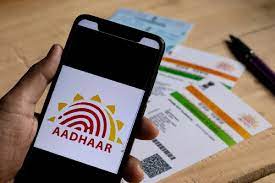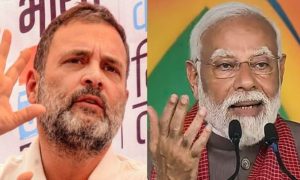Speaking to the beneficiaries of Digital India—an all-encompassing digitisation movement envisaged by him—prime minister Narendra Modi recently said that India’s data and demographic dividend, along with its proven technical proficiency, will make this decade the country’s “Techade”. Both the occasion and his remarks revealed his understanding of technology and its consequences for India. Building on the country’s successes with IT services, the nation has been able to harness governmental scale, technocratic zeal and socio-economic aspirations to invent the India Stack—a bouquet of technological goods spanning unique identification, digital documentation and finance with the potential to alter the country’s destiny.
Read More:– KPMG is common factor among 3 US bank failures in last 2 months; here’s how
The genesis of this revolution was the advent of Aadhaar, an initiative I had the opportunity to work on. This base identity layer has enabled all Indians to prove that they are who they claim to be. Linking an individual’s mobile phone number, bank account and Aadhaar has yielded several advantages to beneficiaries of schemes and to the several arms of governments at the union and state levels that were vested in delivering assistances to citizens. This has been possible due to elimination of bogus and fake accounts, ghost beneficiaries and plugging of leakages.
Read More:– MRF 1690% Dividend 2023: MRF Announces Interim Dividend of Rs 10 per Equity Share
Aadhaar by itself can only prove your identity. Complementary digital infrastructure has been built in the space of payments and data exchange. These systems were all designed similar to Lego blocks—they can be recombined, and stacked on top of each other to create new and unique solutions. These non-linear changes due to combinatorial innovation are accelerating India’s march towards a brighter future. A Bank for International Settlements (BIS) report published in 2019, said that India managed to achieve in seven years, due to its Digital Public Infrastructure (DPI), the kind of progress in financial inclusion that would have taken 47 years otherwise. The same infrastructure was used to deliver financial aid directly and rapidly to citizens when the pandemic first hit. Based on India’s experience with DPI, the World Bank recently noted that the need for digital public infrastructure to foster resilience and enable service delivery and innovation is more crucial than ever.
Read More:– iPhone 13 available for Rs 28,999 during Flipkart Big Saving Days sale; Check how to grab Apple smartphone
As an advisor on innovation and public policy to the National Payments Corporation of India (NPCI), I had the opportunity to work on Unified Payments Interface (UPI), a payments infrastructure. The adoption and scaling of UPI has been possible because of the government’s commitment to digitise money-flows in India. Every month, UPI processes several crore transactions and, in the process, creates trails that can be leveraged for other financial services. UPI as a digital payment ecosystem has gone on to command global attention. Google recommended that the US Federal Reserve develop a similar payments ecosystem for digital payments.
Read More:– EPFO Higher Pension: Now you can delete application and correct errors online
In the two important areas of healthcare and education, massive interventions in the form of the National Digital Health Mission (NDHM) and the National Mission on Education are under way to bring about systemic changes in the nature of service delivery. DIKSHA, which is based on the open source Sunbird modules developed by EkStep Foundation, is a platform for teachers, students and parents that offers engaging learning material relevant to the prescribed school curriculum. DIKSHA’s building blocks cover content, curation, assessment, personalisation, analytics and translation. Its nationwide scaling has meant that today, students across the country are benefitting from richer content while parents and teachers are able to track progress, not an aggregate level but for every single child.
There are a number of other multi-stakeholder ecosystems evolving now that promise to alter the governance landscape comprehensively. The FASTag system for cashless highway toll payments is one such digital ecosystem that leverages Radio Frequency Identification technology and has revolutionised toll collection along India’s national highways. The rapidly-developing Account Aggregator framework and Open Credit Enablement Network (OCEN) are results of the government’s desire and the Reserve Bank of India’s continued support for leapfrogging traditional methods of financial services penetration.
India is also at the forefront of attempting a new standard for e-commerce. Open Network for Digital Commerce (ONDC) is a network based on an open protocol and will enable local commerce across segments such as mobility, grocery, food order and
delivery, hotel booking and travel, among others, to be discovered and engaged by any network-enabled application. The platform aims to create new opportunities by supporting micro, small and medium enterprises (MSMEs) and small traders and help them get on online platforms. It is an initiative of the department for promotion of industry and internal trade (DPIIT) under the ministry of commerce and industry.
Another vital area where we are making significant progress is the application of AI to bring parity between Indian languages and English. AI4Bharat, a centre at IIT Madras that I support, is making open-source contributions to tools, data, models, and applications to catalyse this movement. Through Bhashini, an orchestrator to unify and align a diverse network across governments, industry, academia, research groups and start-ups,
the government is doing its bit to bring all their contributions into an open repository.
India is upgrading. It is going from being an offline, cash-based, informal and low-productivity economy to an online, cashless, formal and high-productivity one. This metamorphosis is inspiring countries across the world to embrace a similar approach.





































